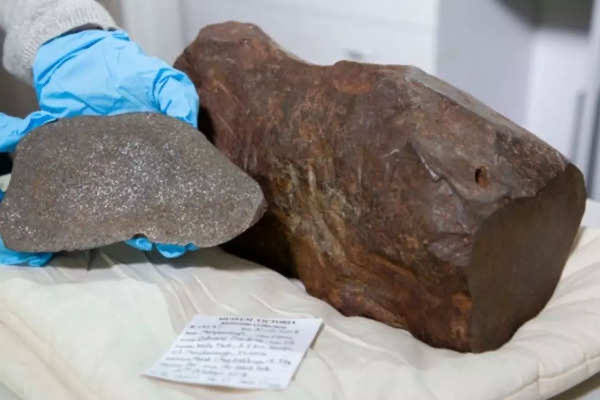Man Mistakes Rock for Gold, Discovers Ancient Meteorite Worth More

Man Mistakes Rock for Gold, Discovers Ancient Meteorite Worth More (Pic Credit TOI)
In 2015, David Hole, a hobbyist collector of valuable objects, found a heavy reddish rock in Maryborough, Victoria. Believing it contained gold, he spent years trying to crack it open using tools like a sledgehammer and acid. Despite his efforts, the rock remained unbroken.
Eventually, Hole took it to the Melbourne Museum for analysis. Experts there identified the rock as the Maryborough meteorite, an incredibly rare 4.6-billion-year-old H5 ordinary chondrite. Weighing 17 kilograms, the meteorite is rich in iron and crystallized minerals called chondrules.
The meteorite, named after the park where it was found, is estimated to have landed on Earth 100–1,000 years ago. It likely originated from the asteroid belt between Mars and Jupiter. Only 17 meteorites have ever been recorded in Victoria, making this discovery exceptionally rare.
Scientists consider the Maryborough meteorite more valuable than gold due to its scientific significance. It offers insights into the early Solar System and the origins of life. The meteorite is now housed at the Melbourne Museum and is estimated to be worth hundreds of thousands to millions of dollars.
Meteorites are fragments of meteoroids that survive their journey through Earth’s atmosphere. They are classified into three types: stony, iron, and stony-iron, often containing rare minerals and elements.
The Maryborough meteorite stands as a testament to human curiosity and the mysteries of the cosmos. Scientists continue to study it, hoping to unlock secrets about planetary evolution and our universe. Hole’s perseverance highlights the wonders hidden beneath the surface, reminding us that true treasures often lie beyond gold.












